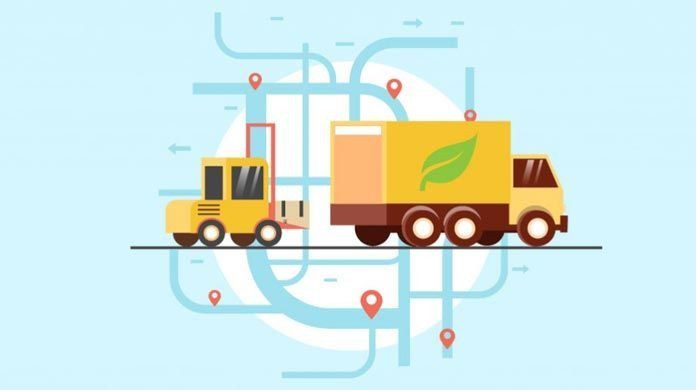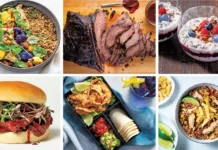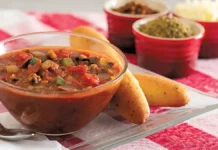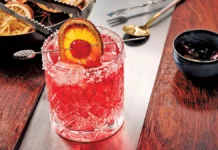
By Michael Elmgreen, Handshake
The foodservice distribution industry is a highly competitive and challenging one. Success is measured by the ability to keep the items customers need in stock, deliver accurate and complete orders multiple times each week, and deliver food safely, on time and at the peak of freshness.
This is no simple task, but today, technology is helping the foodservice distribution industry find ways to serve customers more efficiently and operate more profitably. What are the challenges that foodservice distributors face, and how is technology supporting them?
Challenges Facing Foodservice Distributors
Challenge #1: Consolidation in Broadline
Industry consolidation and competition are big challenges for broadline foodservice distributors. Why are the big getting bigger? One of the major reasons behind the consolidation in broadline is the drive to achieve broader market coverage while at the same time reducing the costs associated with servicing those markets. As part of this, distributors are reducing the size of their sales teams and moving toward technology-based solutions, such as online sales order management, to service their customer base more profitably.
Other opportunities for technology to deliver greater efficiencies in foodservice distribution include enhanced warehouse management functionality to optimize inventory selection and space utilization. Mobile inventory and ordering can also provide better insight for customers, delivering better customer satisfaction at lower costs.
Challenge #2: Growth of Specialty Distributors
For smaller distributors, the highly competitive broadline environment means that they must either find ways to operate more cost-effectively to compete with the “big dogs,” or focus on product niches that can set them apart. Fortunately for smaller operators, changing tastes in food and the consolidation of broadline are opening up growth opportunities for specialty distributors.
Demographic changes play a role in this growth. Millennials and previous generations have very different tastes in food, and meeting these changing needs cost effectively is an opportunity for smaller distributors. Millennial preferences for organic, small-batch, locally sourced or craft products creates demand for specialty products often not carried by broadline distributors, whose business model centers around higher volume, lower margin products.
Technology is playing an important role here too. Mobile sales order management allows smaller distributors to operate more profitably, reducing the time it takes for delivery drivers to service a growing customer base. Mobile track and trace capabilities help provide better assurances about the origins, freshness and prior handling of food. These combine to allow specialty operators to service more customers at lower cost, and higher levels of customer satisfaction.
Challenge #3: Doing More With Less
These two opposing trends – consolidation and specialization – are two different responses to the same challenge faced by all foodservice distributors: the drive to do more with less. Broadline distributors are consolidating to reduce costs, while specialty distributors are seeking to expand their ability to profitably deliver products to new customers and markets.
Technology allows foodservice distributors to meet these challenges, regardless of whether their ultimate goal is to drive down margins or to meet growing demand for specialty goods. Broadline foodservice distributors and specialty distributors alike seek greater efficiencies and the ability to service as many customers as possible without the overhead of a large sales team. However, they must do so without negatively impacting customer service.
Mobile and online ordering technology allows foodservice distributors to do this by delivering improved order accuracy and putting the customer in the driver’s seat. Customers can use familiar mobile technologies, including their own tablets and smartphones, to enter their orders on the fly as ingredients and products run low, leaving reps free to focus their time on higher value, more strategic activities. This same technology allows a smaller sales force to manage more customers as the company grows.
How Technology Is Helping
How does technology help foodservice distributors meet these goals? According to “Food Industry Logistics: Trends That Matter,” a white paper by Technomics and Deloitte and Touche, technology provides tools that allow foodservice distributors to meet these challenges in two important ways:
- Real-time visibility: Mobile technology provides better insight into food supply chains from the manufacturing floor to the table. Mobile ordering allows restaurants to respond more quickly to changing demands, and communicate those changes to their purveyors and supply chain partners. Mobile track and trace capabilities deliver better assurances about the origin and handling of food, a matter of great importance to new generations of restaurant patrons. Mobile warehouse solutions deliver better visibility into distributor inventory, enhancing customer service by reducing backorders and stock outages.
- Communication and collaboration: Better visibility into current demand allows foodservice distributors to pivot and adjust to meet changing tastes and trends, and technology allows distributors to collaborate more closely with chefs and operators. eCommerce and mobile ordering technology allow customers to take control of their orders, access their past order and payment history, and check inventory levels on the products they want all at the click of a button, rather than having to wait for a sales rep to be available to answer questions during sales calls.
Ultimately, whether in specialty or broadline distribution, foodservice distributors who harness the power of technology––specifically mobile and web ordering technology for reps and customers––will stand out from competitors in an increasingly challenging market.
This article originally appeared on the Handshake Blog.























